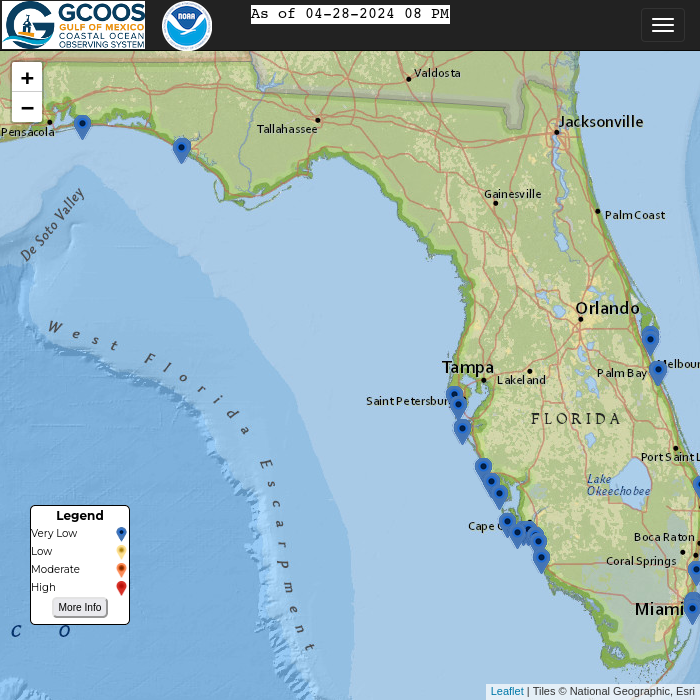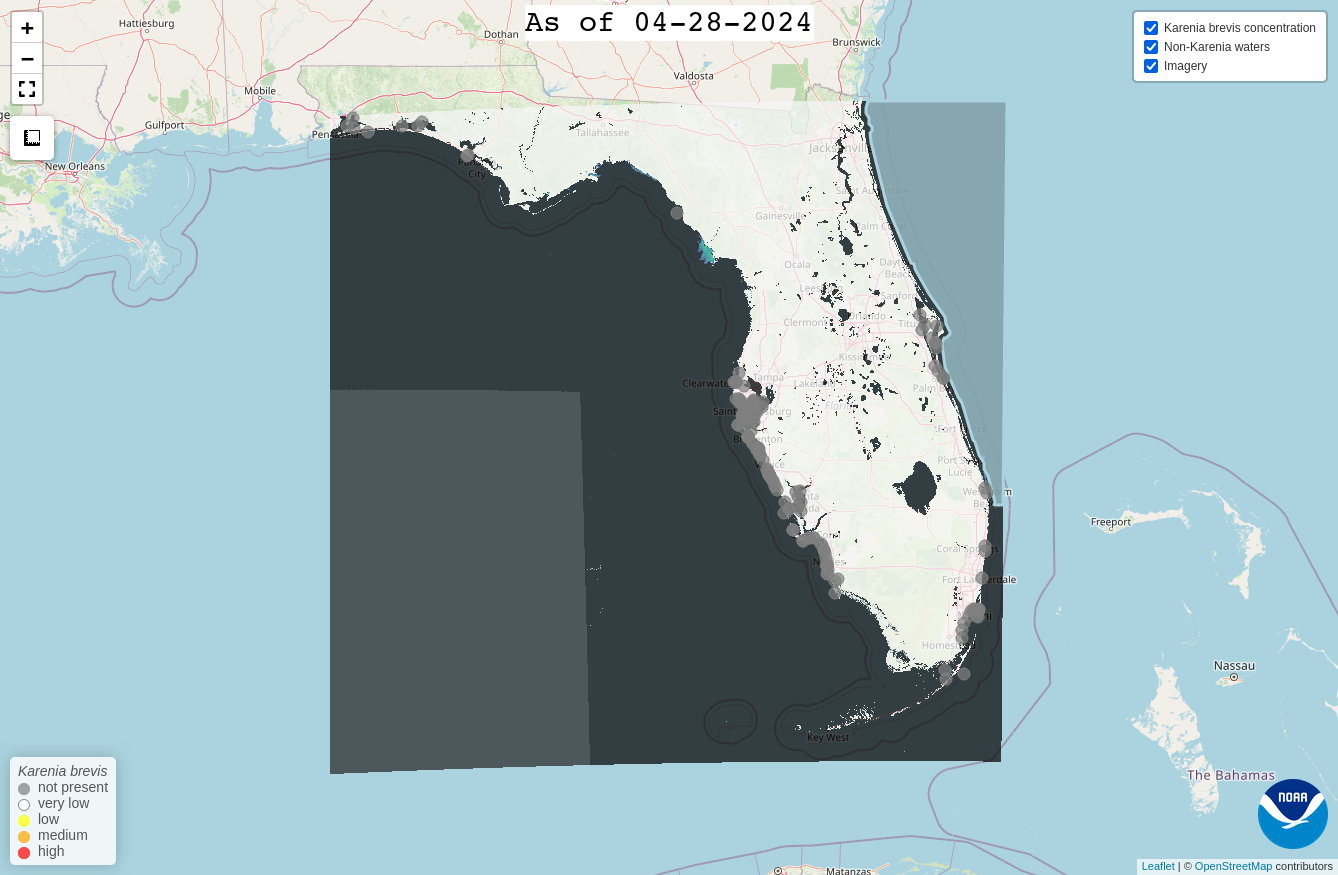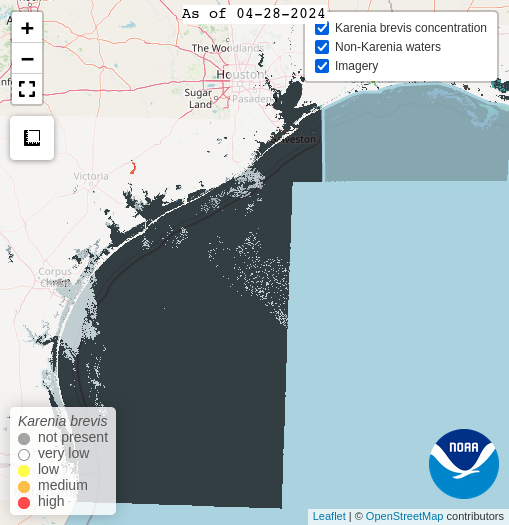HARMFUL ALGAL BLOOM FORECASTS
Gulf Coast Harmful Algal Bloom Forecast
In Florida and Texas, some harmful algal blooms are caused by the microscopic algae species Karenia brevis, commonly called red tide. Karenia brevis blooms can cause respiratory illness and eye irritation in humans. It can also kill marine life, and lead to shellfish closures. Blooms are often patchy, so impacts vary by beach and throughout the day. NCCOS monitors conditions daily and issues regular forecasts for red tide blooms in Florida and Texas. On the rare occasion that blooms reach other areas, such as the Northern Gulf Coast states or Florida’s Atlantic coast, the forecast can be expanded to include affected regions. You can find the regional forecasts below.
Florida - Current Conditions
There is no risk of respiratory irritation from red tide (caused by Karenia brevis) at this time.

Respiratory Forecast
Modeled forecast of respiratory irritation at individual beach locations, based on field samples of Karenia brevis concentration, wind speed, and direction.

Intensification Forecast
Model results estimating the likelihood of bloom initiation or intensification along the coast of Southwest Florida, due to an accumulation of cells at the coast.

Satellite Imagery
Current imagery from the Ocean Land Color Imager (OLCI) showing bloom location and extent.

Beach Conditions Reporting System
Provides today’s conditions at multiple beaches along the west coast of Florida, this includes respiratory irritation, rip currents, wind, and others.

State of Florida Observations
Concentration of K. brevis cells provided by Florida state monitoring programs, from water samples over the last 8 days.
Texas - Current Conditions
There is no risk of respiratory irritation from red tide (caused by Karenia brevis) at this time.

Satellite Imagery
Current imagery from the Ocean Land Color Imager (OLCI) showing bloom location and extent.
More information related to HAB Forecasts
- Real Time Data for the Gulf Coast Respiratory Irritation Forecast
- Archived Gulf Coast Forecasts
- More information about our bloom monitoring imagery
- Health information – Summary of the ways red tide can impact the health of humans and animals
- FAQs – Frequently Asked Questions about red tide and the forecasts NOAA issues.
- Harmful Algal Blooms Observing System (HABSOS) – Interactive map of past and present Gulf Coast HAB data
- Contributors and Data Providers
- HAB Forecast Research
- Gulf Coast HAB Forecast Guide – User guide to help navigate the forecast products
- Enhanced HAB forecasts are now available to the public in real time.

